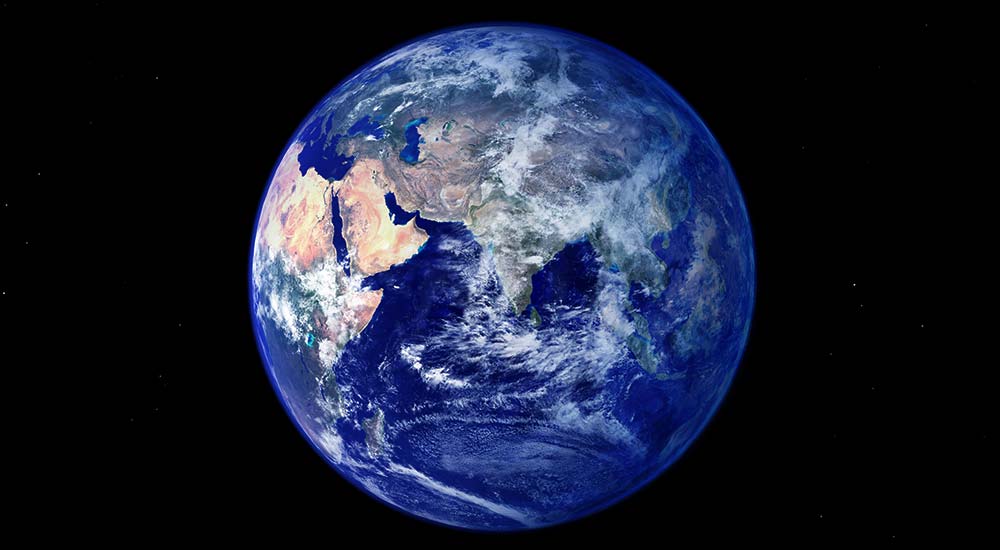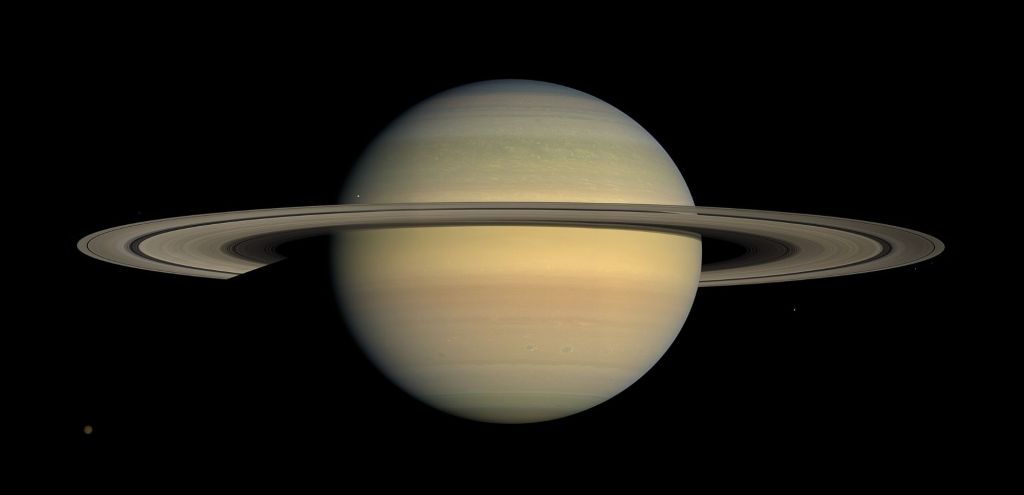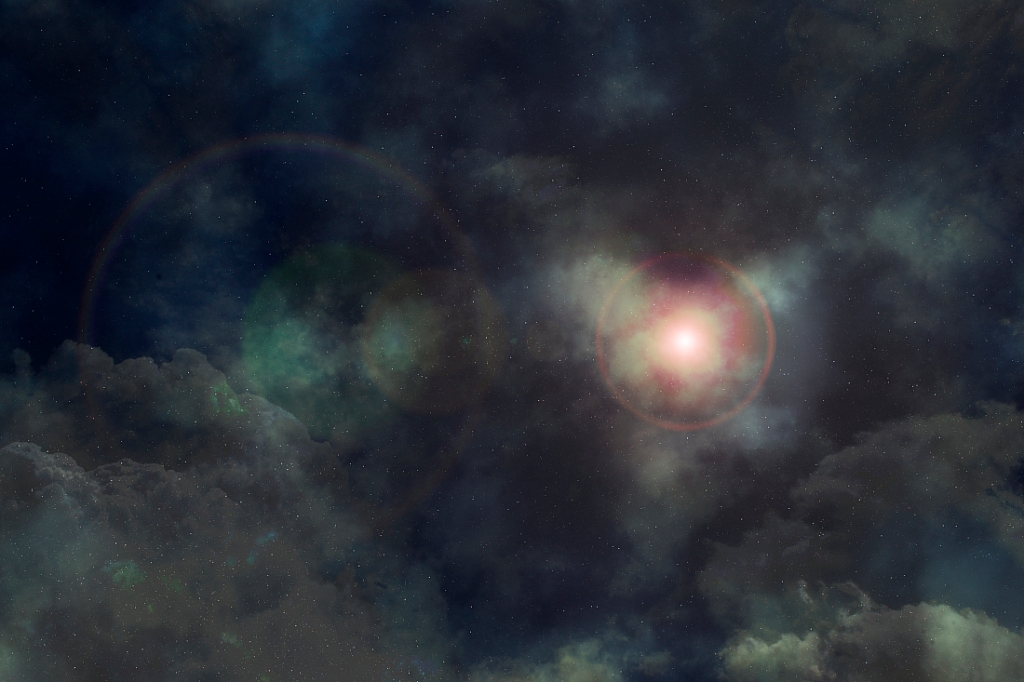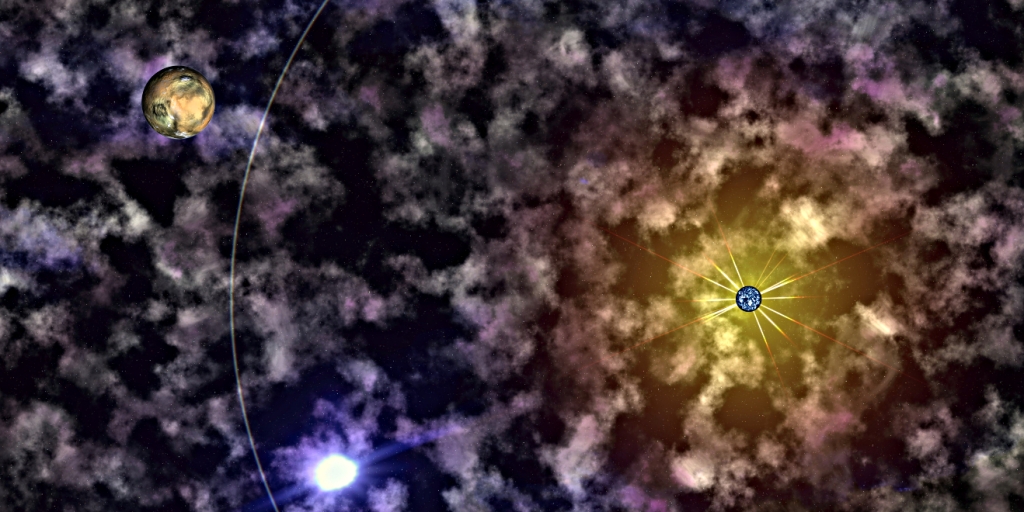Introduction:
Obviously, there’s no need to even think of producing a paper disproving the absurd idea that the Earth is flat. Nonetheless, I am not entirely persuaded that we live in a sane or rational society because there are still a lot of “cosmologically challenged” individuals who think the Earth is flat. As a result, it could be helpful to highlight a few key scientific findings from antiquity to the present that demonstrate the spherical shape of the Earth and other celestial bodies.
The idea that the Earth is flat is a long-standing myth that has persisted despite overwhelming evidence to the contrary. Even the Jewish rabbis in their Talmud have made erroneous claims that the Earth is flat. “In the Talmudic mind, the Earth was a flat disc covered by an opaque sky known as the rakia. Exactly how the sun moved was the topic of a famous dispute between the ‘wise men of Israel’ and the ‘wise Gentiles.’…The rabbis of the Talmud believed that the world was flat, and that the sun revolved around the Earth everyday….The view of the Talmudic rabbis is contrasted with that of the ancient Greek astronomers. While the rabbis of the Talmud argued about the size of the flat Earth, the Greeks had determined the earth to be a sphere, had calculated its circumference and had moved on to consider other questions.”1 So literally, all of the people who are advancing the nonsense myth of a “flat Earth”, are fundamentally propagating an old Jewish fiction of cosmology. I have personally known several world-class Jewish Physicists who would have never taken seriously the “flat Earth” cartoonish belief, because they were brilliant scientists who could discern scientific facts from old unreal nonsense. This outline will provide a comprehensive overview of the evidence supporting the theory that the Earth, along with the planets and stars, are round-shaped (spherical, or, oblate spheroid), and will demonstrate why the flat Earth theory is fundamentally flawed.
Evidence from Ancient Findings:
Ancient Greek philosopher, Pythagoras, was one of the first to propose that the Earth was round, based on observations of lunar eclipses and the curving shadow of the Earth on the moon. According to the ancient Greeks, Parmenides or Pythagoras, who lived approximately 500 BC, discovered that the Earth is spherical. When we reach Aristotle, who lived approximately 350 BC, he had established three proofs for the roundness of the Earth.
Aristotle (b.384 BC-d.322 BC), was an Ancient Greek philosopher who contributed greatly to proving that the Earth was spherical-shaped. He observed that different stars were visible from different locations on Earth, suggesting that the Earth had a curved surface. This observation supported the idea of a spherical Earth, as different stars would be visible from different points on a spherical Earth. He also observed that the phases of the moon and the occurrence of lunar eclipses could be explained by the moon’s orbit around a spherical Earth. The changing appearance of the moon’s phases and the curved shape of the Earth’s shadow during lunar eclipses supported the idea of a spherical Earth. Aristotle also observed that ships sailing away from the shore appeared to gradually disappear below the horizon, with the hull disappearing first and the mast last. This observation suggested that the Earth had a curved surface, as the ship would gradually disappear below the curve of the Earth’s surface as it sailed away.
“Again, our observations of the stars make it evident, not only that the Earth is circular, but also that it is a circle of no great size. For quite a small change of position to south or north causes a manifest alteration of the horizon.” (Aristotle, On the Heavens, Book II, Part 298a)
“Around 240 BC, Eratosthenes made a famous measure of the circumference of the Earth. In a wonderful analysis, he made a geometric model of the Sun, Earth, and shadows. Using trigonometry, he calculated the circumference of the Earth and discovered that it was 250,000 stadia, which is about right.”2 Eratosthenes measured the Earth’s circumference using a simple but ingenious method. He knew that at the summer solstice, the sun would be directly overhead at noon in the city of Syene, casting no shadow, while in his home-town of Alexandria, it would cast a small shadow. By measuring the angle of the shadow in Alexandria and knowing the distance between the two cities, he could use geometry to calculate the Earth’s circumference (Circumference = (distance between cities) * (360 degrees / angle of shadow)). His estimation was within 2% of the Earth’s actual circumference. His method demonstrated that the Earth is round and provided valuable information about its size and shape.3
Eratosthenese knew that vertical objects cast no shadows when the sun was directly overhead, and that sunlight reached the bottom of deep wells when directly above. He noticed that on the first day of summer, at noon in Alexandria, “a city 5000 stadia to the north (of Syene), the Sun was seen to be displaced slightly from the vertical.”4 The Sun is 7.2 degrees away from the vertical at Alexandria, according to Eratosthenes’ calculation. Why are the two measurements different from one another? The explanation is as simple as saying that the Earth’s surface is curved rather than flat. The Earth is a sphere. While Aristotle, the philosopher, had discovered that Earth is spherical more than a century before Eratosthenes, he seems to have been the first to expand on this discovery by using geometry and physical measurements to determine the size of our globe.
Aristophanes of Byzantium was born about 257 BC, and died around 180 BC: He was a Greek philosopher and librarian in Alexandria, where he made significant contributions to the field of grammar, literary criticism, and astronomy. He was one of the first to support the idea of a spherical Earth based on the observation that different stars are visible from different locations on Earth. This observation suggested that the Earth was not flat but had a curved surface, which could explain the changing appearance of the stars as one moved from one place to another. He laid the foundation for future advancements in the field. His personal writings on astronomy did not survive, but his ideas have been preserved through the works of other ancient philosophers and astronomers, such as the Roman naturalist, Pliny the Elder (b.AD23/24-d.AD79), and the brilliant Alexandrian mathematician and astronomer, Claudius Ptolemy (b.c.AD100-d.AD170).5
Claudius Ptolemaeus, also known as Ptolemy, was an ancient Greek astronomer who arguably created the greatest geocentric model ever devised (around AD 140). It provided an amazingly accurate description of the Sun, Moon, and five planets’ known courses as well as their observed trajectories. However, the complete Ptolemaic model needed a minimum of 80 circles in order to reach its explanatory and predictive potential, it would take a far more complicated set of calculations to account for the paths of the Sun, Moon, and all eight of the planets that are currently known, which is all described in his work, the Almagest.6 7 His model, while incorrect in its placement of the Earth at the centre, was based on a spherical Earth and helped to explain various astronomical phenomena, such as the changing positions of celestial bodies in the night sky. Ptolemy’s observations and calculations also supported the idea of a round Earth, as he noted that the stars visible in the night sky changed depending on one’s location on Earth. This observation suggested that the Earth had a curved surface, as different stars would be visible from different points on a spherical Earth. Additionally, Ptolemy’s work on geography, the Geographia, included maps of the world that portrayed the Earth as a sphere, further supporting the idea of a round Earth.8 9 While Ptolemy’s geocentric model of the universe was eventually proven incorrect, his work played a significant role in the development of astronomy and geography, and his evidence for a round Earth helped to solidify the idea that the Earth was not flat but had a curved, spherical shape.
Evidence from Early Modern Findings:
During the Age of Exploration, explorers like Columbus, Magellan, and Drake navigated around the Earth, providing empirical evidence of its spherical shape. Ferdinand Magellan’s (b.1480-d.1521) voyage around the world, completed by his crew after his death, provided strong evidence for the idea that the Earth was round.10 During their journey, Magellan and his crew observed the changing positions of celestial bodies in the night sky, which supported the idea of a spherical Earth. They also encountered new lands and cultures, further demonstrating the vastness and roundness of the Earth. “The achievements of Magellan were of profound importance. His supreme accomplishment was the discovery and crossing of the South American strait that bears his name—a major navigational task, considering the knowledge of the period. Moreover, being the first to traverse the ‘Sea of the South’ from east to west, he demonstrated the immensity of the Pacific Ocean and the challenges it posed to navigation. Finally, the idea of the voyage itself had relied on the not-undisputed idea of a spherical Earth. The circumnavigation completed by Magellan’s expedition thus confirmed the conception of the world as a globe.”11
Italian mathematician and philosopher, Galileo Galilei (b.1564-d.1642), had observed the phases of Venus, which further supported the idea of a spherical Earth and a heliocentric solar system. Galileo discovered Saturn’s puzzling appearance and Venus’ phases while in Florence. These discoveries challenged Aristotelian cosmology, as they contradicted the absolute difference between the earthly region and the perfect heavens. The Moon’s mountainous surface, Jupiter’s moons, and Venus’ phases confirmed that Earth revolves around the Sun. In 1610 Galileo published his observations and beliefs that the Sun was at the centre of the solar system, and Earth as a planet was confirmed, as Copernicus had argued. This conversion to Copernicanism marked a significant turning point in the Scientific Revolution, as it confirmed the Sun’s role in the universe and confirmed Earth’s role as a planet.12 Galileo wrote about the Earth’s spherical shape in several of his works. One of his most famous works on this subject is his Dialogue Concerning the Two Chief World Systems, published in 1632. It was in this book that Galileo presented a detailed argument for the heliocentric model of the universe, with the sun at the centre and the Earth and other planets orbiting around it. This model was based on the idea that the Earth was a sphere, and this shape could explain various astronomical phenomena, such as the changing positions of celestial bodies in the the night sky.13
Filippo Vincenzo Romolo Salviati (b.1583-d.1614), a scientist and close friend and associate of Galileo, is mentioned in the Dialogue Concerning the Two Chief World Systems—Galileo’s controversial 1632 work—and later Salviati is heard from again in Galileo’s Discourses and Mathematical Demonstrations Relating to Two New Sciences (1638). In both works, Galileo reconstructed his companion as a character to argue for his scientific discoveries. In these works, Galileo employs the skilled Copernican mathematician Salviati to refute opposing or possible heretical viewpoints to win the debate. In one dialogue, Galileo as Salviati states the rather realistic details of the moon and its similarities to Earth: “Salviati, using data from telescopic observations, describes the features of the moon and its resemblance to earth: it is spherical, mountainous, and has areas of contrasting brightness.”14
In the 17th century, Isaac Newton’s laws of gravity and motion provided a theoretical basis for understanding the Earth’s round shape and its influence on celestial bodies. Sir Isaac Newton (b.1643-d.1727) was an English mathematician, physicist, and philosopher who made some of the most significant contributions to the fields of mathematics, physics, and astronomy. His work on gravity and the laws of motion helped to revolutionize our understanding of the universe and the Earth’s shape, supporting the idea of a spherical Earth. In his book, the Principia Mathematica, published in 1687, Newton described the concept of universal gravitation, which stated that every object in the universe attracts every other object with a force proportional to their masses and inversely proportional to the square of the distance between them. This concept, along with his laws of motion, helped to explain various astronomical phenomena, such as the orbits of planets around the sun and the moon around the Earth. Newton’s work on gravity and the laws of motion supported the idea of a spherical Earth, as these principles could explain the Earth’s shape and its ability to hold an atmosphere and support life. The force of gravity, acting uniformly on all objects on the Earth’s surface, would cause the Earth to assume a spherical shape, as this is the shape that minimizes the gravitational potential energy of the system.15 “Newtonian mechanics and the law of gravity work well for small masses and low velocities, and hence for almost every application on or near Earth. But in the early 20th century, Albert Einstein overthrew these ideas with a better one—relativity theory, which deals with fast-moving, often massive objects in curved space. Now, in the 21st century, scientists are beginning to grapple with the notion that other, still unknown, forces may dominate the universe on the largest scales.”16 It is interesting to point out, “as with planets, gravity is the primary factor that shapes large asteroids, which is why they are approximately spherical.”17
Evidence from Modern Science:

Photograph of Earth taken by the Hubble Space Telescope. Photo Credit: NASA.
- Satellite imagery, including photographs from the International Space Station and the Hubble Space Telescope, clearly shows the Earth’s round shape.
- The Global Positioning System (GPS) relies on a network of satellites orbiting the Earth, demonstrating the Earth’s round shape and providing accurate navigation.
- The James Webb Space Telescope, launched in 2021, has provided stunning visual evidence of the roundness of celestial bodies, including stars and planets. As Carl Sagan once said, “Astronomy is a humbling and character-building experience. There is perhaps no better demonstration of the folly of human conceits than this [any] distant image of our tiny world [taken from space]. To me, it underscores our responsibility to deal more kindly with one another, and to preserve and cherish the pale blue dot, the only home we’ve ever known.”
Evidence from Visual Proof:
- The Earth’s round shape can be observed during lunar eclipses, where the Earth’s shadow appears as a curved line on the moon’s surface.
- Photographs and videos taken from space clearly show the Earth’s round shape, with a distinct curvature visible at the horizon.
- The James Webb Space Telescope has captured breathtaking images of stars and planets, further confirming their round shape.

Naked Eye Proof:
- The Earth’s Curvature: When observing the horizon, the Earth’s curvature can be seen as a gradual disappearance of objects as they recede into the distance. This effect is especially noticeable when observing ships at sea, as the lower part of the ship disappears first, followed by the upper part, as it moves further away.
- Lunar Eclipses: During a lunar eclipse, the Earth’s shadow appears as a curved line on the moon’s surface, which is clear indication of the Earth’s round shape.
- Stars and Planets: The appearance of stars and planets in the sky can also provide evidence of their round shape. As celestial bodies move across the sky, their position and brightness change, which can be attributed to their spherical shape and the way they reflect light.
- Satellite Movement: Observing the movement of satellites in the sky can also provide evidence of the Earth’s round shape. Satellites move in a curved path across the sky, consistent with the idea that they are orbiting a spherical Earth.
- Atmospheric Perspective: The Earth’s atmosphere can cause objects on the horizon to appear distorted or curved, which is another indication of the Earth’s round shape. As Carl Sagan once said, “Science is a way of thinking much more than it is a body of knowledge. Its goal is to find out how the world works, to seek what regularities there may be, to penetrate these properties down to the most fundamental level possible. In the quest, it is guided by the evidence provided by observations and experiments. It is in the interpretation of observations and experiments that scientific thinking is most difficult, most ambiguous, and most easily leads to erroneous conclusions.”
Conclusion:
The evidence supporting the round shape of the Earth, planets, and stars is overwhelming, ranging from ancient observations to modern scientific discoveries. The flat Earth theory, in contrast, is utterly without merit and fails to account for the vast array of evidence supporting the spherical Earth theory. The Hubble Space Telescope, the Cassini Spacecraft, and the James Webb Space Telescope, in particular, has provided stunning visual proof of the roundness of celestial bodies and further reinforces the fact that the flat Earth theory is fundamentally ridiculous and flawed.
Citations:
1Brown, Jeremy. “The Talmudic View of the Universe.” Acprof, May 2013, pp. 27-41. Accessed 27 June 2024.
2Schaefer, Bradley E. The Remarkable Science of Ancient Astronomy. THE GREAT COURSES, 2016. p. 164.
3“Eratosthenes of Cyrene.” The History Channel, A&E Television Networks, 2022.
4Chaisson, Eric and Steve McMillan. Astronomy: A Beginner’s Guide to the Universe. Pearson, 2017. p. 21.
5“Aristophanes of Byzantium.” The History Channel, A&E Television Networks, 2022.
6Ptolemy. “Book I: The Earth and its Position in the Universe.” Almagest, trans. G.J. Toomer, Princeton University Press, 1998. pp. 1-23.
7Ptolemy. “BookII: the Celestial Coordinate System and the Fixed Stars.” Almagest, trans. G.J. Toomer, Princeton University Press, 1998. pp. 25-71.
8Ptolemy. “Book I: Introduction and Principles of Geography.” Geographia, trans. Edward Luther Stevenson, Dover Publications, 1991. pp. 1-16.
9Ptolemy. “Book II: Europe. “Geographia, trans. Edward Luther Stevenson, Dover Publications, 1991. pp. 17-92.
10Pigafetta, Antonio. “Chapter 1: “The Departure from Spain and the Crossing of the Atlantic,” pp. 1-10. Chapter 2: “The Passage through the Strait of Magellan,” pp. 11-20. Magellan’s Voyage: A Narrative Account of the First Circumnavigation. Trans. R.A. Skelton, Yale University Press, 1969.
11“Ferdinand Magellan – Circumnavigation of the Globe.” Encyclopaedia Britannica, 2019, www.britannica.com/biography/Ferdinand-Magellan/Circumnavigation-of-the-globe. Accessed 27 June 2024.
12Helden, Albert Van. “Galileo – Telescopic Discoveries.” Encyclopaedia Britannica, 2019, www.britannica.com/biography/Galileo-Galilei/Telescopic-discoveries. Accessed 27 June 2024.
13Galilei, Galileo. Dialogue Concerning the Two Chief World Systems. Trans. Stillman Drake, University of California Press, 1967.
14Galilei, Galileo. Dialogue Concerning the Two Chief World Systems. Trans. Stillman Drake, University of California Press, 1967.
15Newton, Isaac. The Principia: Mathematical Principles of Natural Philosophy. Trans. I. Bernard Cohen and Anne Whitman, University of California Press, 1999.
16Chaisson, Eric and Steve McMillan. Astronomy: A Beginner’s Guide to the Universe. Pearson, 2017. p. 41.
17Chaisson, Eric and Steve McMillan. Astronomy: A Beginner’s Guide to the Universe. Pearson, 2017. p. 109.



You must be logged in to post a comment.